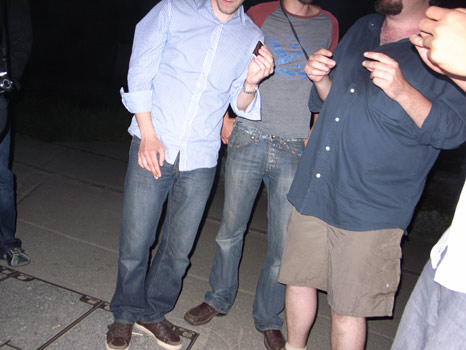Michael writes to H.F: “We enjoy the space between being ‘in the know’ and simply being attentive to one’s social environment where the unexpected may occur, setting up an interaction that will provide a meaningful communication, ‘loading the decks’.”
[photos by 戴璞 Dai Pu]
It ends with a face in rain, or two, that washed away one after the other like passing faces in a party.
The next day, he sends me a message: “One day I will explain to you why things are so complicated.”
And then it becomes difficult to respond, silence an only recourse, uncovering to plot thickening. The loneliness amidst joyful crowds, like the stripping away of an impersonator who says, “I don’t know. I was born that way.”
People ask questions all the time to which we must answer, “I don’t know.” I can’t remember anymore which way it was when i was born, but somehow I always return to a letter read as a child, from an old woman. I read her as if I were her already, so confounded by the inexplicability of my thoughts, to the possibility of their being expressed. It seems now, in future, utterly impossible to answer any question asked of me. I find less and less the words to place the complexities of my feeling.
Perhaps now back outside of each of those moments, I could answer each of you in turn, eloquently and honestly. Like an old woman’s remembrance of the sound of a black-capped chickadee, a doing nothing kind of being or simply, so simply, the fullness of…
Posted by 丫 | reply »retour au camps de base
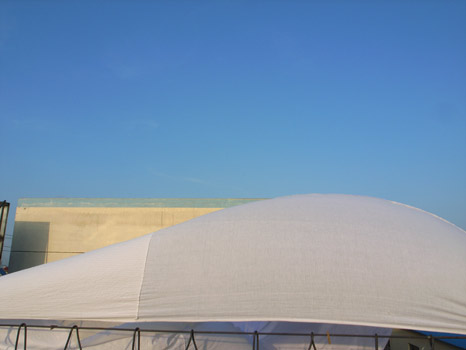

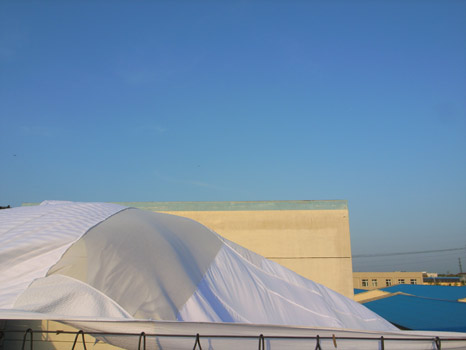



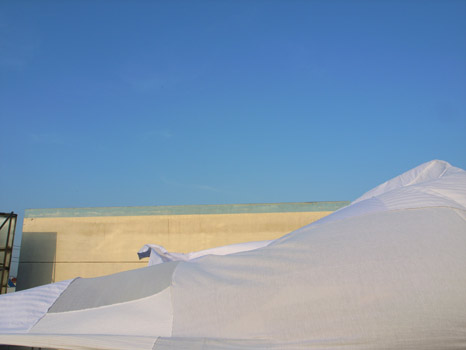
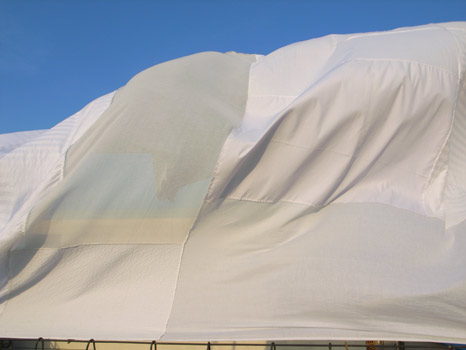
[春天,宋庄 | Spring in Songzhuang, China; Matthieu & Sylvie & mode d’emploi]
Posted by 丫 | more »please don’t go, don’t go away

Research material from part of the PUBLIC project by Elaine W. Ho and Fotini Lazaridou-Hatzigoga. Organized as a daily series of experiments, interventions and discourses, PUBLIC aims to examine the potentiality of latency and open spaces made possible in the relations between individuals and publics. Other activities are posted here. Some are open invitations to all, others are unannounced insertions in different locations throughout Berlin. PROGRAM – intitiative for art and architecture collaborations; 22 January – 1 February 2009.
Posted by 丫 | reply »sous les pavés, la plage
BEFORE AND DURING AND AFTER: Three days’ thought on media culture and artificial life
…as responsible human beings, we forget (Ha, seduction!). Were we unable to, every horror and every pain experienced as the newly born would retain itself, excruciating, just as every moment of laughter and joy, but we would never recover. The mirrors of Lacan are as inevitably linked to artificial life as self and world. And forgetfulness is not so much saying no as being able to say yes again. Are you ready to rule the world?
—-From a small text written, weaving writing experiment, flow. June 2008, Saas-Fee. Read the full essay [here]. Apologies for lack of page numbers for notes/references, please write if you need more.
Posted by 丫 | reply »他说女权

他说的,太… 什么的,所有小东西放了正好,我们每一个都有正好的位子。她的头发散了好看一点。 所有的东西之间都有点间隙,空间的,时间的。冬天也有花开。没想到云雪的天也开冷朗的一种黄色。这也意外的,突然在江边开始化妆。所有是上下文的。我们喝咖啡。换位子。聊。那个字是flaneur. 但不知道flaneur有没有包括女的。我们都有正好的位子吗?
冬天也有花开…
Posted by 丫 | reply »toward a theory of the designwork Posted by 丫 | more »
not-yet-expired activity
 [readings for Best Before; this is what we’re up to; arnhem, boston and beijing in new york, August-October 2006]
[readings for Best Before; this is what we’re up to; arnhem, boston and beijing in new york, August-October 2006]
“The separation between a thing and its environment cannot be absolutely definite and clear-cut; there is a passage by insensible gradations from the one to the other; the close solidarity which binds all the objects of the material universe, the perpetuality of their reciprocal actions and reactions, is sufficient to prove that they have not the precise limits which we attribute to them. Our perception outlines, so to speak, the form of their nucleus; it terminates them at the point where our possible action upon them ceases, where, consequently, they cease to interest our needs. Such is the primary and the most apparent operation of the perceiving mind: it marks out divisions in the continuity of the extended, simply following the suggestions of our requirements and the needs of practical life.” —from Matter and Memory, Bergson
“We ought to think of the historical world according to this model. Why ask if history is made by men or by things, since it is obvious that human initiatives do not annul the weight of things, and the ‘force of things’ always acts through men? It is just this failure of analysis, when it tries to bring everything down to one level, which reveals history’s true milieu. There is no ‘last analysis,’ because there is a flesh of history in which (as in our own body) everything counts and has a bearing — the infrastructure, our idea of it, and above all the perpetual exchanges between the two in which the weight of things becomes a sign as well, thoughts become forces, and the balance of the two becomes events. It is asked, ‘Where is history made? Who makes it? What is this movement which traces out and leaves behind the figures of the wake?’ It is of the same order as the movement of Thought and Speech, and, in short, of the perceptible world’s explosion within us. Everywhere there are meanings, dimensions, and forms in excess of what each ’consciousness‘ could have produced, and yet it is men who speak and think and see. We are in the field of history as we are in the field of language or existence.”These transformations of private into public, of events into meditations, of thought into spoken words and spoken words into thought, this echo coming from everywhere makes it such that in speaking to others we also speak to ourselves, and speak of what exists. This swarming of words behind words, thoughts behind thoughts–this universal substitution is also a kind of stability.” —from Signs, Merleau-Ponty
“Take, for example, a small drawer, which the carpenter has made for the convenience of some housefold. With the passage of time, the actual form of this drawer is surpassed by time itself and, after the decades and centuries have elapsed, it is as though time had become solidified and had assumed that form. A given small space, which was at first occupied by the object, is now occupied by solidified time. It has, in fact, become the incarnation of a certain form of spirit. —from Kinkakuji, Mishima
Posted by secretary | reply »